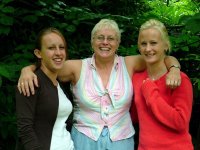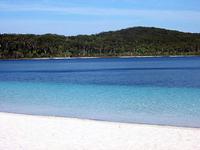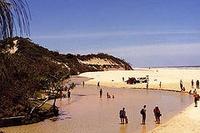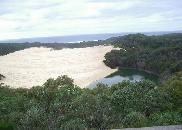ROYAL BRUNEI AIRLINES
Outbound: United Kingdom via Brunei to Brisbane Australia
Airport Name: Seri Begawan Brunei
Airport Code: BWN
Country: Brunei Darussalam
Country Code: BN
GMT Offset: - 8.0
Friday 09th Dec 2005
Flight BI 98 from London Heathrow to Brunei
Depart London Heathrow at 10:10
Arrive into Brunei at 10:35 next day (Brunei Time) - 8 hours
Saturday 10th Dec 2005
Flight BI 71 from Brunei to Brisbane
Depart Brunei at 13:00
Arrive into Brisbane at 21:45 10th Dec 2005
Inbound: Sydney Australia via Brunei to United Kingdom
Thursday 05th Jan 2006
Flight BI 194 Sydney to Brunei
Depart Sydney at 12:50
Arrive into Brunei at 17.15 05th Jan 2006
Thursday 05th Jan 2006
Flight BI 97 from Brunei to London Heathrow
Depart Brunei at 20:15
Arrive into London Heathrow at 06:40 on 06th Jan 2006
The Economy Seats
Domestic Flight Details with Qantas and Virgin Blue

 Gladstone - Brisbane 19th December QF 2307
Dep - 17:35 Arr - 18.45
Brisbane -Melbourne 19th December DJ 344
Dep - 20.35 Arr - 23.55
Melbourne - Launceston 23rd December DJ 610
Dep - 19.50 Arr - 20.50
Launceston -Sydney 30th December DJ 975
Dep - 10.00 Arr - 11.35
Gladstone - Brisbane 19th December QF 2307
Dep - 17:35 Arr - 18.45
Brisbane -Melbourne 19th December DJ 344
Dep - 20.35 Arr - 23.55
Melbourne - Launceston 23rd December DJ 610
Dep - 19.50 Arr - 20.50
Launceston -Sydney 30th December DJ 975
Dep - 10.00 Arr - 11.35
On the day of the 10th December I will be arriving into Brisbane from Melbourne on the following flight:
10th December DJ 311 Melbourne Brisbane 08.00 09.05
I will then transfer to 4WD Hire Service and collect your 4WD. It's at this stage that I will also stock and supply the vehicle for your adventure onto the Cooloola Coast and then onto Fraser Island.
I will then collect you at Brisbane Airport on the 10th December and transfer you to the Medina Executive for your first night in Oz.
I will then depart Brisbane on the following flight to meet you in Melbourne on arrival.
19th December DJ 324 Brisbane Melbourne 12.15 15.13
Check in time for Australian domestic airlines is at least 1 hour prior to departure.
You are flying on a Boeing 767-300ER on the day. If you click on this link it will take you to a similar seating plan to your Royal Brunei flight and it will give you some idea of what seats to request.
Royal Brunei Web Site




















































